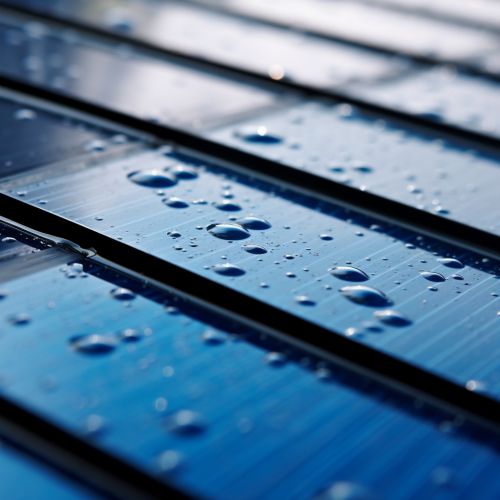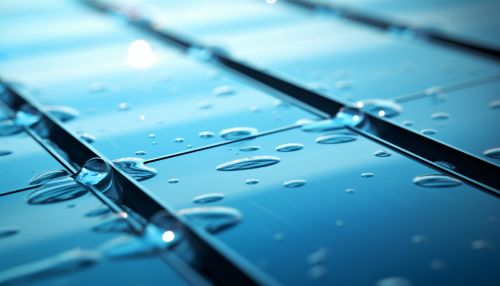Solar Cell Efficiency
Introduction
A solar cell, also known as a photovoltaic cell, is an electrical device that converts the energy of light directly into electricity by the photovoltaic effect. It is a form of photoelectric cell, defined as a device whose electrical characteristics, such as current, voltage, or resistance, vary when exposed to light. The efficiency of a solar cell is one of its most critical parameters. It indicates the amount of sunlight that can be converted into usable electricity.


History of Solar Cell Efficiency
The history of solar cell efficiency began with the discovery of the photovoltaic effect by French physicist Edmond Becquerel in 1839. The first practical solar cell was developed by Bell Laboratories in 1954 with an efficiency of about 6%. Since then, the efficiency of solar cells has been steadily increasing, with the latest high-efficiency cells reaching efficiencies above 40%.
Factors Affecting Solar Cell Efficiency
The efficiency of a solar cell is determined by several factors, including the quality of the materials used, the design of the cell, and the conditions under which it operates. These factors can be broadly divided into material factors, design factors, and operational factors.
Material Factors
The materials used in the construction of a solar cell have a significant impact on its efficiency. The most commonly used material is silicon, which has a high light absorption coefficient and is relatively easy to process. However, other materials like gallium arsenide, perovskite, and organic polymers are also used, each with their own advantages and disadvantages.
Design Factors
The design of a solar cell also plays a crucial role in its efficiency. This includes the thickness of the cell, the arrangement of the layers, and the presence of any anti-reflective coatings or texturing on the surface of the cell. The design also determines the path that light takes through the cell, which can affect how much of the light is absorbed and converted into electricity.
Operational Factors
Operational factors include the intensity and angle of the sunlight hitting the cell, the temperature of the cell, and the load on the cell. These factors can all affect the efficiency of the cell, and are often considered when designing and installing solar panels.
Types of Solar Cells and Their Efficiencies
There are several types of solar cells, each with different efficiencies. These include monocrystalline silicon cells, polycrystalline silicon cells, thin-film cells, and multi-junction cells.
Monocrystalline Silicon Cells
Monocrystalline silicon cells are made from a single crystal structure. They have the highest efficiency of any type of silicon cell, typically around 15-20%.
Polycrystalline Silicon Cells
Polycrystalline silicon cells are made from multiple crystal structures. They have a slightly lower efficiency than monocrystalline cells, typically around 13-16%.
Thin-Film Cells
Thin-film cells are made by depositing one or more thin layers of photovoltaic material onto a substrate. They have lower efficiencies than silicon cells, typically around 10-12%, but are cheaper to produce.
Multi-Junction Cells
Multi-junction cells are made by stacking different types of solar cells on top of each other, each designed to absorb a different part of the solar spectrum. These cells have the highest efficiencies of any type of solar cell, with some designs reaching efficiencies above 40%.
Improving Solar Cell Efficiency
There are several ways to improve the efficiency of a solar cell. These include improving the quality of the materials used, optimizing the design of the cell, and optimizing the conditions under which the cell operates.
Material Improvements
Improvements in the quality of the materials used in a solar cell can lead to higher efficiencies. This can include using purer silicon, using better conductive materials for the contacts, or using better anti-reflective coatings.
Design Optimizations
Optimizing the design of a solar cell can also lead to higher efficiencies. This can include making the cell thinner, optimizing the arrangement of the layers, or optimizing the path that light takes through the cell.
Operational Optimizations
Optimizing the conditions under which a solar cell operates can also improve its efficiency. This can include optimizing the angle at which the cell is installed, optimizing the load on the cell, or optimizing the temperature at which the cell operates.
Conclusion
Solar cell efficiency is a critical parameter that determines the performance of a solar cell. It is influenced by several factors, including the materials used, the design of the cell, and the conditions under which it operates. By understanding these factors and how they affect efficiency, it is possible to design and build more efficient solar cells, leading to more cost-effective and sustainable solar power systems.
